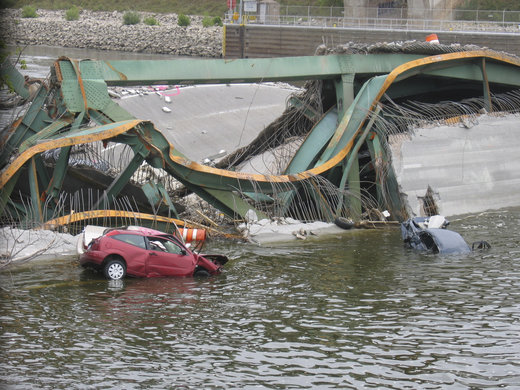11 March 2014
An international team of engineers is developing a novel ‘wi-fi’ sensing system to detect the onset of deterioration in bridges, stadiums and other structures. Funded by Qatar, it will be deployed in the Gulf state’s mammoth build programme ahead of the 2022 World Cup.
With a grant of just over $1m from the government of Qatar, the team, from New Jersey Institute of Technology (NJIT), Canada’s Memorial University, and Qatar University, is working on a wireless sensor network that will help structures ‘feel’ their own vibrations, sagging and stresses.
It will send data to engineers to help them assess a structure’s soundness and prevent failures before they happen.
Two of the system’s key innovations are that sensors will be placed in the rebar of concrete structures and, further, that they would transmit data only when movement occurs, said Mohamed Mahgoub, one of the project partners and director of the Concrete Industry Management program at NJIT.
Other members of the team include electrical engineers from Memorial University in Newfoundland, Canada, who will investigate electrical aspects of the wireless network, and engineers from Qatar University who will install the wireless network and collect the data.
“While the network can be installed on existing bridges, the aim is to embed it in a structure’s steel bars before the concrete is even poured,” said NJIT’s Mahgoub.

The remote sensing system is intended to prevent disasters such as the I-35 bridge collapse in Minneapolis, USA, August 2007 (FEMA/Todd Swain/Wikimedia Commons)
Sensors would be triggered only when there is movement on the bridge, saving the time involved in sifting through the reams of data collected and sent by systems that are ‘always on’.
“It takes so much time to analyse and much of it is irrelevant,” Mahgoub said. “We would also save money, labour and traffic interruptions by optimizing when to intervene and make repairs – deciding whether a smaller fix is needed in the short-term or whether it is better to wait for a larger fix.”
As well as cutting the amount of data collected down to a more manageable amount, Mahgoub said the system would also cut costs of remote structural sensing by reducing the number of sensors used.
He added: “Our part of this project is to determine not only where to place the sensors, but to decide what type of data the system will collect, how to interpret it, and then how to make a decision about where, when, and to what extent to intervene.”
The three-year project begins in May with a meeting at Qatar University to discuss the first steps. The team will install sensors on two existing bridges in Qatar to monitor their behaviour by the end of the year.
At NJIT Mahgoub plans to build a small bridge model to test the system.
Advanced monitoring of infrastructure is of particular interest to Qatar, which is hosting the the 2022 FIFA World Cup and is now building bridges, stadiums, tramways, and tunnels in preparation.
“CIM students at NJIT will learn how to detect and predict concrete damage by analyzing the collected data from the wireless network that is attached to any structure,” Mahgoub said, adding that they will be able to apply what they learn in future construction management jobs “to evaluate infrastructure in the U.S. and around the world.”






